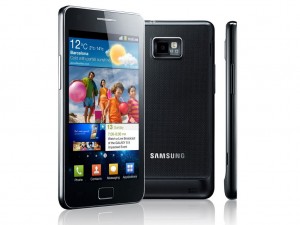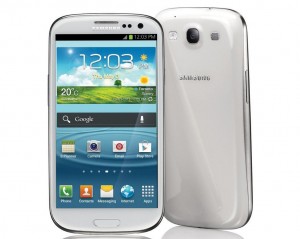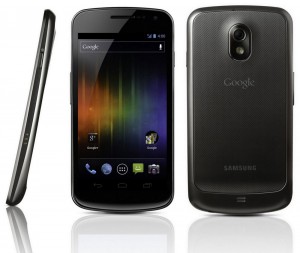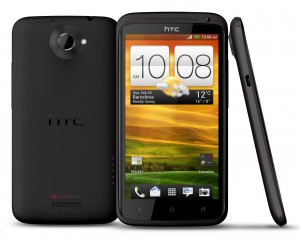Fogey 5
Smartphones
The Fogey 5 are the best five products in their class by virtue of expert and consumer review from at least 10 respected and authoritative websites.
Some explanatory blather before we get going:
The previous Fogey 5 for smartphones featured the Apple iPhone 4, Samsung Galaxy S2, Sony Ericsson Xperia Arc, Google Nexus S and HTC Desire HD. When aggregating this category, manufacturers such as HTC, which has 17 smartphones in its range, are at a disadvantage compared with Apple which has one. Samsung also makes a ton of slightly varying smartphones (29 if we’re counting) but seems to have achieved what its rivals haven’t by making at least three phones that are serious competition for the iPhone (even if they just copied the Apple handset and will spend the next 50 years in court as a consequence).
Trawling through tech websites to reach a smartphone consensus is easy – the ‘best’ handsets are the most expensive, the most consistently well-reviewed and therefore the most desirable. Occasionally a budget model such as the £100 Huawei Ascend G300 sticks its nose in the trough but everyone will know you’re a cheapskate if you buy one. There’s no buzz around the Samsung Galaxy S Advance or the HTC Salsa or any other handset that doesn’t make a statement about the size of your wad. So, while there are dozens of handsets out there that can be had for £100 or less with a pay-as-you-go SIM and no ludicrous two-year contract, you might as well have a screen-saver that says, ‘I’m Poor’.
And whither BlackBerry? 38 handsets featured at least once on 10 top ten lists at a tech website or retailer and only two were BlackBerries. Adios, you old fruits.
Samsung Galaxy S II
 The sole survivor from the previous Fogey 5 and while it might seem perverse to include it alongside the Galaxy S III you at least get to compare the spec and muse on the differences and where future developments may occur. Operating systems can be upgraded but meat and spuds components such as the processor – which makes a phone go like the clappers (or not) – realistically can’t. One notable difference between the S II and S III is the price; the S II is trading on Phones4U at around £20-25 per month on contract, while the S III will set you back £26-30 for a similar package. And because we’re fundamentally bone-idle, here’s the old blurb on the S II from that previous Fogey 5.
The sole survivor from the previous Fogey 5 and while it might seem perverse to include it alongside the Galaxy S III you at least get to compare the spec and muse on the differences and where future developments may occur. Operating systems can be upgraded but meat and spuds components such as the processor – which makes a phone go like the clappers (or not) – realistically can’t. One notable difference between the S II and S III is the price; the S II is trading on Phones4U at around £20-25 per month on contract, while the S III will set you back £26-30 for a similar package. And because we’re fundamentally bone-idle, here’s the old blurb on the S II from that previous Fogey 5.
The technorati have been unanimously moist in their lusting for the S II which has a dual core processor (helps keep multiple apps going speedily and simultaneously), Super AMOLED 4.3-inch display and ‘PC-like browsing thanks to the Galaxy S II’s downloading speeds of up to 21mbps or lightning fast downloads with Dual Channel WiFi.’ ‘The Galaxy S II’s screen is nothing short of spectacular. Blacks are impenetrable, colors pop out at you, and viewing angles are supreme,’ said Engadget. ‘A superlative smartphone from Samsung, with a fabulous screen, oodles of power and a cracking camera to match,’ said PC Pro. Similarities between this handset and the iPhone 4 are purely coincidental. It’s also very thin, if that’s your thing. Launched Q2 2011.
More info here Buy at Phones4U
Apple iPhone 4s
 All the geeks are getting their y-fronts in a lather owing to the supposedly imminent launch of a properly new iPhone. In spite of all the improvements the 4s can boast over the 4 (better camera functionality, Siri the smarty pants etc) the sighs of disappointment at the 4s launch rippled around the globe, our expectations of Apple being sky high, with or without the supposedly charismatic Steve Jobs (where commentators acquired the impression that Jobs possessed stage presence is a constant mystery to everyone in the Fogey potting shed – the man tucked his sweat shirt into his jeans for God’s sake). Mrs Fogey has an iPhone 4 and very handsome it is, although keeping it that way involves wrapping it in some sort of rubber cocoon that inevitably detracts from its original naked lusciousness. It also has a tendency to get bored when she’s talking and hang up. This latter ‘feature’ might be more to do with her service provider which gets more cash from four calls lasting one minute each (we always call each other back, darlings!) than for one four-minute call. Or are we just being paranoid? Anyway, David Pogue has a much better explantion than TF could manage and a neat video here that explains in baby talk how and why the 4s is better than the 4. Launched Q4 2011.
All the geeks are getting their y-fronts in a lather owing to the supposedly imminent launch of a properly new iPhone. In spite of all the improvements the 4s can boast over the 4 (better camera functionality, Siri the smarty pants etc) the sighs of disappointment at the 4s launch rippled around the globe, our expectations of Apple being sky high, with or without the supposedly charismatic Steve Jobs (where commentators acquired the impression that Jobs possessed stage presence is a constant mystery to everyone in the Fogey potting shed – the man tucked his sweat shirt into his jeans for God’s sake). Mrs Fogey has an iPhone 4 and very handsome it is, although keeping it that way involves wrapping it in some sort of rubber cocoon that inevitably detracts from its original naked lusciousness. It also has a tendency to get bored when she’s talking and hang up. This latter ‘feature’ might be more to do with her service provider which gets more cash from four calls lasting one minute each (we always call each other back, darlings!) than for one four-minute call. Or are we just being paranoid? Anyway, David Pogue has a much better explantion than TF could manage and a neat video here that explains in baby talk how and why the 4s is better than the 4. Launched Q4 2011.
More info here Buy at Phones4U
Samsung Galaxy S III
 And so to the Samsung Galaxy S III ‘see you in court’ smartphone. In the same way that Intel managed to christen slim, light, powerful laptops ‘Ultrabooks’ it’s surely time to create a new category of mobile phone that goes beyond smartness and into the realms of ‘goodness me, that’s ever so clever, what will they think of next?!’ territory. Putting the specifications of the S II and S III side by side we notice the S III is 19g heavier; the S II has a 4.3-inch Super AMOLED Plus screen while the S III has a humungous 4.8-inch Super AMOLED HD screen displaying 1280×720 pixels to the 800 x 480 resolution of the S II; the S III has a 64GB variant whereas the most memory an S II has is 32GB; the S II is stuck with an older operating system (Android 2.3, aka Gingerbread) whereas the S III began life with Android 4.0 (aka Ice Cream Sandwich, which I think we’d call a wafer over here and don’t even begin to guess or wonder why Android operating systems have daft names; maybe it’s to try and make all this techy stuff accessible and whacky and… whisper it… human). Its OS has now been upgraded to 4.1 ‘Jelly Bean’. One area in which the S III doesn’t score by comparison is looks – the S II is a much classier slice of phone pie. “The Samsung Galaxy S III is the best smartphone on the market. It’s got every kind of feature we could ask for and more,” said Tech Radar. “The S III is a mighty big phone that’s powerful, feature-packed and exceptionally desirable,” said T3. And it’s just overtaken the iPhone as the world’s number one handset. Trebles all round. Launched Q2 2012.
And so to the Samsung Galaxy S III ‘see you in court’ smartphone. In the same way that Intel managed to christen slim, light, powerful laptops ‘Ultrabooks’ it’s surely time to create a new category of mobile phone that goes beyond smartness and into the realms of ‘goodness me, that’s ever so clever, what will they think of next?!’ territory. Putting the specifications of the S II and S III side by side we notice the S III is 19g heavier; the S II has a 4.3-inch Super AMOLED Plus screen while the S III has a humungous 4.8-inch Super AMOLED HD screen displaying 1280×720 pixels to the 800 x 480 resolution of the S II; the S III has a 64GB variant whereas the most memory an S II has is 32GB; the S II is stuck with an older operating system (Android 2.3, aka Gingerbread) whereas the S III began life with Android 4.0 (aka Ice Cream Sandwich, which I think we’d call a wafer over here and don’t even begin to guess or wonder why Android operating systems have daft names; maybe it’s to try and make all this techy stuff accessible and whacky and… whisper it… human). Its OS has now been upgraded to 4.1 ‘Jelly Bean’. One area in which the S III doesn’t score by comparison is looks – the S II is a much classier slice of phone pie. “The Samsung Galaxy S III is the best smartphone on the market. It’s got every kind of feature we could ask for and more,” said Tech Radar. “The S III is a mighty big phone that’s powerful, feature-packed and exceptionally desirable,” said T3. And it’s just overtaken the iPhone as the world’s number one handset. Trebles all round. Launched Q2 2012.
More info here Buy at Phones4U
Samsung Galaxy Nexus
 Those of you who’ve been paying attention may recall Nexus handsets that were a Google-branded device and that the new Google tablet is called the Nexus 7 (as in 7 inch-screen). The idea was that Nexus devices would be at the forefront of Google’s development of their Android operating system, getting OS upgrades before other handsets running Android (which is to say everyone who isn’t Apple and, er, Microsoft/Nokia). The Nexus One – launched Jan 2010, was made by HTC, the Nexus S arrived in Dec 2010 from Samsung and the latest is the Galaxy Nexus, also by Samsung and let loose in late 2011. The Galaxy Nexus began with Android 4.0 and was the first recipient of the 4.1 ‘Jelly Bean’ OS but the Galaxy S III now runs that system (although not the HTC One X, yet…). And is it ‘better’ than the HTC or the iPhone or either of the other handsets featured here? They all do the swipey, jabby screen thing, they all have posh cameras, lush screens and even allow the making of telephone calls (imagine that!) so it could all come down to a subjective, aesthetic whim. Or price. SIM-free, the Galaxy Nexus is still the thick end of £500 and contract deals start at around £25 or less with a ‘free’ handset. The Galaxy S II can be had for less than £350 SIM-free and contract deals are a tiny bit cheaper. The S III is around £520 and £30 a month and the HTC One X is around £475 and £25 a month. Comparable Apple stuff is always more expensive. “While it lacks the refined aesthetics of the iPhone 4S, the Samsung Galaxy Nexus impresses with a 4.65-inch HD screen and the slick new Android 4.1 operating system,” said Cnet. “While it might be too big for everyone’s taste, the Nexus is a beautiful handset; the screen is vibrant and one of the best we’ve seen on any handset to date,” said T3 while bemoaning the fact that the Galaxy Nexus ‘only’ has a 5 megapixel camera. Sooo picky. Launched Q4 2011.
Those of you who’ve been paying attention may recall Nexus handsets that were a Google-branded device and that the new Google tablet is called the Nexus 7 (as in 7 inch-screen). The idea was that Nexus devices would be at the forefront of Google’s development of their Android operating system, getting OS upgrades before other handsets running Android (which is to say everyone who isn’t Apple and, er, Microsoft/Nokia). The Nexus One – launched Jan 2010, was made by HTC, the Nexus S arrived in Dec 2010 from Samsung and the latest is the Galaxy Nexus, also by Samsung and let loose in late 2011. The Galaxy Nexus began with Android 4.0 and was the first recipient of the 4.1 ‘Jelly Bean’ OS but the Galaxy S III now runs that system (although not the HTC One X, yet…). And is it ‘better’ than the HTC or the iPhone or either of the other handsets featured here? They all do the swipey, jabby screen thing, they all have posh cameras, lush screens and even allow the making of telephone calls (imagine that!) so it could all come down to a subjective, aesthetic whim. Or price. SIM-free, the Galaxy Nexus is still the thick end of £500 and contract deals start at around £25 or less with a ‘free’ handset. The Galaxy S II can be had for less than £350 SIM-free and contract deals are a tiny bit cheaper. The S III is around £520 and £30 a month and the HTC One X is around £475 and £25 a month. Comparable Apple stuff is always more expensive. “While it lacks the refined aesthetics of the iPhone 4S, the Samsung Galaxy Nexus impresses with a 4.65-inch HD screen and the slick new Android 4.1 operating system,” said Cnet. “While it might be too big for everyone’s taste, the Nexus is a beautiful handset; the screen is vibrant and one of the best we’ve seen on any handset to date,” said T3 while bemoaning the fact that the Galaxy Nexus ‘only’ has a 5 megapixel camera. Sooo picky. Launched Q4 2011.
More info here Buy at Phones4U
HTC One X
 HTC’s flagship handset and the successor to the Desire also represents the first fruits of HTC’s purchase of design company One and Co, making the name not entirely coincidental. A Tegra 3 quad core 1.5GHz processor allied to 1GB of RAM makes for lightening fast swipe reaction. Even a few years ago, you’d have only seen that sort of computing power in a laptop costing over £1,000. And here it is today. In a phone. Massive, 4.7-inch LCD screen, 8 megapixel camera, micro-USB port and all sorts of other wizardry that just gives Fogies a headache trying to comprehend. “The HTC One X is a beautiful piece of kit,” said Tech Radar. “It’s stylishly designed, light, has a cracking screen and comes with enough future-proofing to make us believe our grandchildren may still have one.” “Stunning HD screen, superfast quad core processor, excellent 8MP camera, Android 4.0 is a great OS,” summarised Trusted Reviews. Quibbles were lack of any sort of SD card slot to complement its 32GB internal memory and feeble battery life if you make full use of its many talents. And if you want to be free of the 24-month contractual shackles, a SIM-free handset will set you back around £450. Launched Q1 2012.
HTC’s flagship handset and the successor to the Desire also represents the first fruits of HTC’s purchase of design company One and Co, making the name not entirely coincidental. A Tegra 3 quad core 1.5GHz processor allied to 1GB of RAM makes for lightening fast swipe reaction. Even a few years ago, you’d have only seen that sort of computing power in a laptop costing over £1,000. And here it is today. In a phone. Massive, 4.7-inch LCD screen, 8 megapixel camera, micro-USB port and all sorts of other wizardry that just gives Fogies a headache trying to comprehend. “The HTC One X is a beautiful piece of kit,” said Tech Radar. “It’s stylishly designed, light, has a cracking screen and comes with enough future-proofing to make us believe our grandchildren may still have one.” “Stunning HD screen, superfast quad core processor, excellent 8MP camera, Android 4.0 is a great OS,” summarised Trusted Reviews. Quibbles were lack of any sort of SD card slot to complement its 32GB internal memory and feeble battery life if you make full use of its many talents. And if you want to be free of the 24-month contractual shackles, a SIM-free handset will set you back around £450. Launched Q1 2012.















